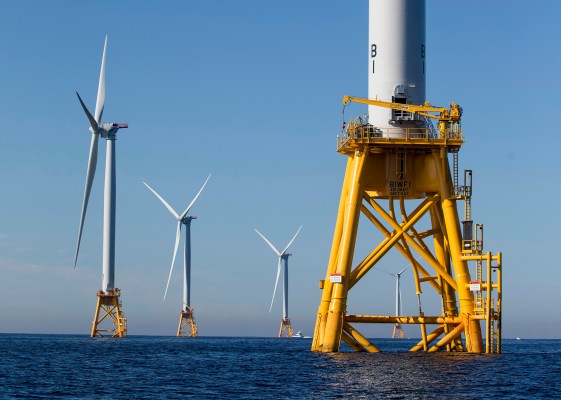Rhode Island leaped ahead in the race to 100% renewable power last week as Governor Dan McKee signed a bill that would mandate the state reach the target by 2033, the most aggressive state target so far. Only Oregon comes close, and it’s shooting for 2040.
In some respects, Rhode Island has it easy. With a population of a little over 1 million people, it’s smaller than many metro areas, so switching to renewables isn’t the enormous undertaking it would be in California or Texas.
But on the other hand, renewables tend to need a lot of space, and the state’s 1 million people are tightly packed — Rhode Island is the second most densely populated state in the country.
While Rhode Island may not have space, it does have plenty of open water blessed with strong and consistent winds, which makes it an ideal place for offshore wind. Which is why the state’s swift move to renewable power is as much about addressing climate change as it is about securing the state’s economic future.
Offshore wind hasn’t made many waves in the U.S. yet, but it’s about to. The U.S. is behind the EU in deploying offshore wind, but it’s catching the industry at a good moment. Globally, offshore wind is expected to grow from $33.5 billion worldwide last year to $90 billion by 2030, according to Polaris Market Research.
The Biden administration has made offshore wind a central theme of its climate plan, with a goal of installing 30 GW of offshore wind by 2030. President Joe Biden and Interior Secretary Deb Haaland met last month with governors from 11 states on the East Coast to announce a partnership to deploy offshore wind from Maine to North Carolina.
Already, Biden’s goal doesn’t appear to be much of a stretch based on a report from the Department of Energy’s National Renewable Energy Laboratory, which cites two industry forecasts that suggest the U.S. will be within striking distance. Already, at the end of 2020, over 23 GW of offshore wind capacity have been completed or leased, and the government is putting up another 12 GW worth of open ocean for lease.
The first U.S. lease was for a stretch of ocean near Block Island, where Deepwater Wind installed five Alstom turbines, each with 73-meter-long blades, to generate 30 MW of power, and that project began operating in 2016. While subsequent projects were slow to roll out — blame the last president, who hated wind turbines — the process has picked up steam under the Biden administration. Along the Eastern Seaboard, from Massachusetts south to New Jersey, nearly 30 GW worth of projects are planned, permitted or approved.
Another thing that’s been holding back offshore wind in the U.S. is an obscure 1920 law known as the Jones Act, which requires vessels transporting people or goods between U.S. ports to be built, owned and operated by U.S. citizens. Because offshore wind turbines require specialized boats to install, the law has created a sort of chicken-and-egg problem.
Block Island Wind got around it by using one set of boats to transport parts to the wind turbine installation vessel (WTIV). Other demonstration projects have loaded the parts into the WTIV at a foreign port, which adds unnecessary time and expense while also forcing production abroad. A Jones Act-compliant WTIV is currently under construction, but the U.S. will need several more of the $500 million vessels, according to IHS Markit.
Rhode Island has a long history of shipbuilding, and much of its industry has been dominated by marine trades, thanks in part to its nearly 400 miles of coastline. McKee and other government officials have been pushing the narrative of a “blue economy,” one that revolves around making the most of the ocean and associated industries.
The state’s government clearly hopes to revive industrial employment through the blue economy initiative and offshore wind. Driving the adoption of offshore wind fits those goals. Ports would benefit from added traffic and shipyards would be well positioned to build WTIVs for the East Coast. Beyond that, IHS Markit forecasts that the world outside of China will need 79 vessels to meet demand for offshore wind projects by 2030.
“As home to the nation’s first offshore wind farm, Rhode Island is a pioneer in the blue economy,” McKee said. “Rhode Island is on a path to reducing climate emissions to net-zero by 2050 and a 100% renewable energy standard by 2033 — harnessing the power of offshore wind is part of our pathway to achieving those targets.”
If McKee and the state play their cards right, offshore wind could do more than just help Rhode Island hit its climate targets. It could reach new economic heights, too.
